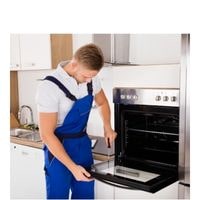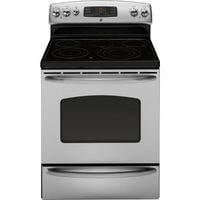General Electric self-cleaning oven problems. This guide is all about the solutions and common problems related to the General Electric self-cleaning oven.
If the self-clean cycle won’t start, it’s probably because your oven’s temperature control is set too high.
After cooking in your oven, make sure that it cools completely before turning on the self-clean function.
General Electric self-cleaning oven problems

Here we will discuss some common issues and solutions for General Electric’s self-cleaning oven problems.
Defective Thermal Fuse
Thermal fuses protect ovens from overheating by preventing them from overheating. The oven is shut off when the thermal fuse trips due to overheating.
The thermal fuse cannot be reset if it trips, it needs to be replaced.
To test whether or not your thermal fuse has blown, use a multimeter to check for continuity between its terminals; if there isn’t any continuity, you need a new thermal fuse.
Control Board Failure
Oven control boards serve as the perfect example of how a small piece of machinery and electrical components can have an impact on thousands of people’s lives.
The onboard computer inside the oven circuit board uses relays to send voltage over specific wires that are then connected to the heating components inside the bake and broil circuits.
Should any issue arise, it may prevent electricity from being transmitted over certain wires, thus preventing a person from baking or broiling their meals.
Faulty Switch Assembly
During the oven’s self-cleaning cycle, the door lock switches on and off repeatedly as it mechanically works to keep you locked out.
If the door lock switch is faulty, your oven will not be able to unlock once the cleaning process has completed.
Luckily, most ovens have a manual lock that can be removed with a screwdriver or any other tool that you might have laying around in the kitchen.
There are certain screws and panels that might need to be removed first so that you can get your hands inside the appliance.
Once inside, look for obvious signs of malfunction such as loose wires and disconnections or damaged areas of any kind so you can fix whatever needs fixing before starting up the self-cleaning cycle again.
Door Switch Faults
The oven door may not lock due to a defective door switch. Failures in the door switch are often caused by wiring issues, which can be caused by corrosion and mistakes in the manufacturing of your appliance.
To troubleshoot this problem, we recommend using a multimeter to test for continuity and if none is found, replace the suspect partly with a new one as indicated in your product’s service manual.
Defects of Thermostat
When your oven is on the cleaning setting, it can be hard to tell whether or not your food is actually being cooked.
This can eventually lead to an awkward situation where you think everything is going fine when in reality your meal has already been undercooked.
The part of the oven that helps with this problem is the thermostat. A faulty thermostat can cause your oven not to self-clean properly so you should be sure to check it periodically.
FAQs
How do I reset my GE self-cleaning oven?
Press the “Self Clean” key on your oven and the number pad will instruct you when to set the temperature and how long it’ll take.
Once that’s done, press “Start” to begin the cycle. Wait 60 seconds and press “Clear/Off” until you’re told that everything is clear then unlock your door.
Where is the thermal fuse on a GE oven?
Unplug your electric oven and see if the fuse is blown. The fuses might be in the main house fuse box or located somewhere else inside your unit. It differs from model to model and depends on where you purchased it from.
Check your oven’s fuse label which will likely be attached next to one of the controls. If your fuse looks burnt, it is likely that it has blasted out due to a short circuit or another electrical fault.
Related Guides
